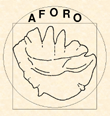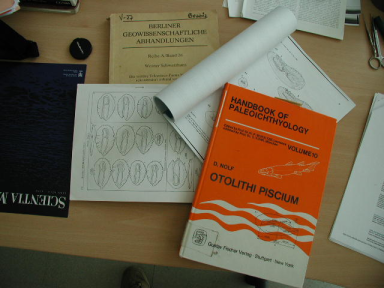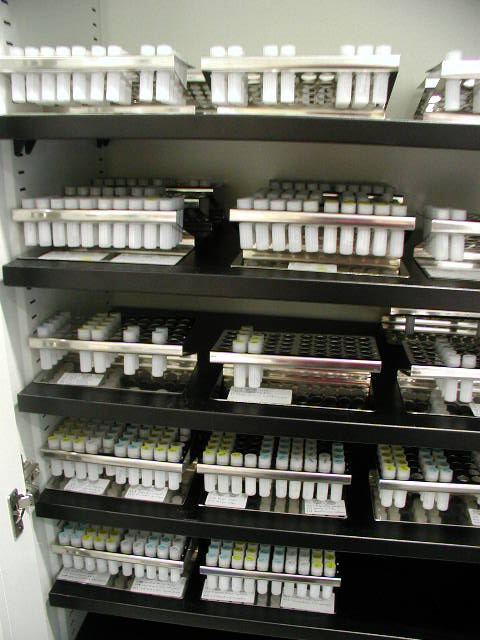




Site best viewed with 1024 x 768 resolution
How is shape diversity studied?
|
The first studies on otolith morphology focused on anatomic
descriptions with drawings. In the 80s a common nomenclature was developed
for the different parts of the otolith (glossary) and for the various
anatomic
types. Currently otoliths are still described and reproduced with black
and white drawings, and also with digital photos taken with an optic or
electronic microscope.
 Classical descriptions of the otolith morphology. With the development of image analysis systems in the 90s, the concept of shape analysis began to be introduced into otolith studies. The shape analysis systems used are based on studying the contour of the entire otolith. The first works in the 90s employed the distances between the perimeter and the centre of gravity or they used Fourier harmonics to numerically decompose the otoliths. Fourier analysis can reconstruct a version of the contour that is close to the original by choosing a reduced set of harmonic terms. However, it is difficult to locate the contour's singularities from this spectrum. As an alternative, Wavelet transform and Curvature Scale Space representation allow to quantify the irregularities of the contour and determine its precise position. These properties make them suitable for pattern recognition purposes, ageing, stock determination and species identification studies (Parisi-Baradad et al 2005, Piera et al 2005). Given that it is extremely important to be able to retrieve information and data on a large number of otoliths, a web-based approach to access a database through the internet is suitable. AFORO (in Catalan the acronym for shape analysis of fish otoliths) is composed of a database of high-resolution fish otoliths with complete morphometric information, and a shape analysis module that provides mathematical descriptors of otolith shapes. An automatic system that can describe and identify otolith shapes is of general use for sex, age, population and species identification studies, and also provides necessary and relevant information in ecological studies (Lombarte et al 2006, in press).  The AFORO collection. |